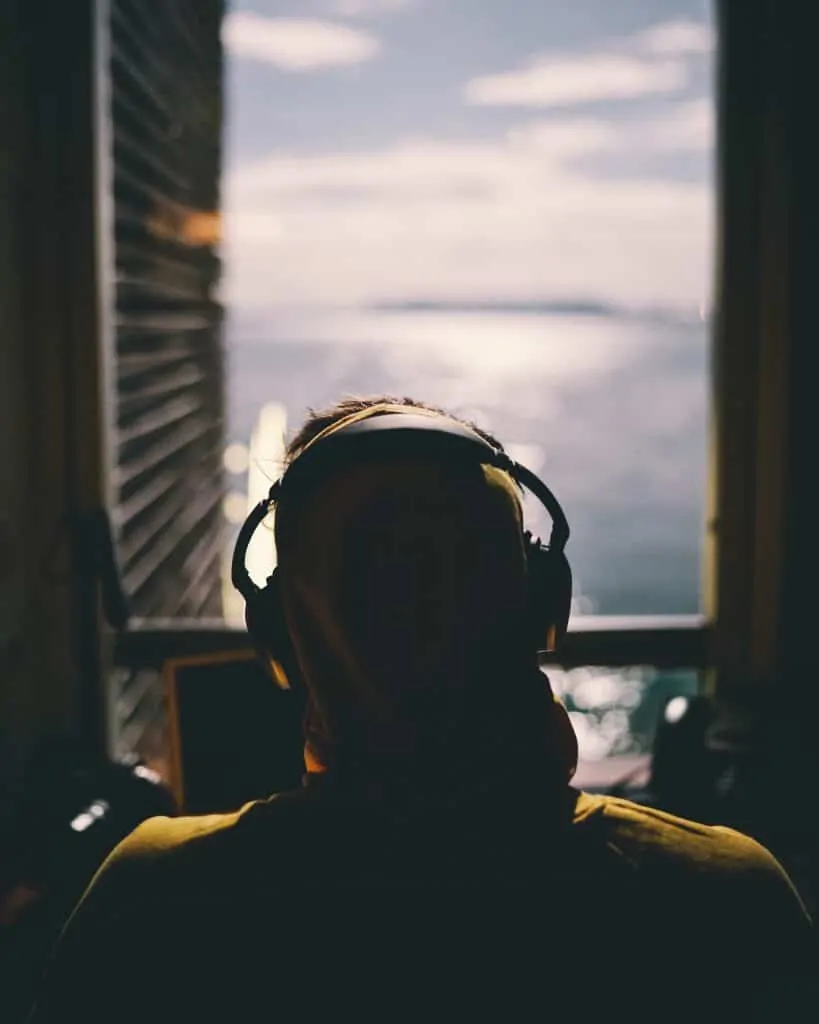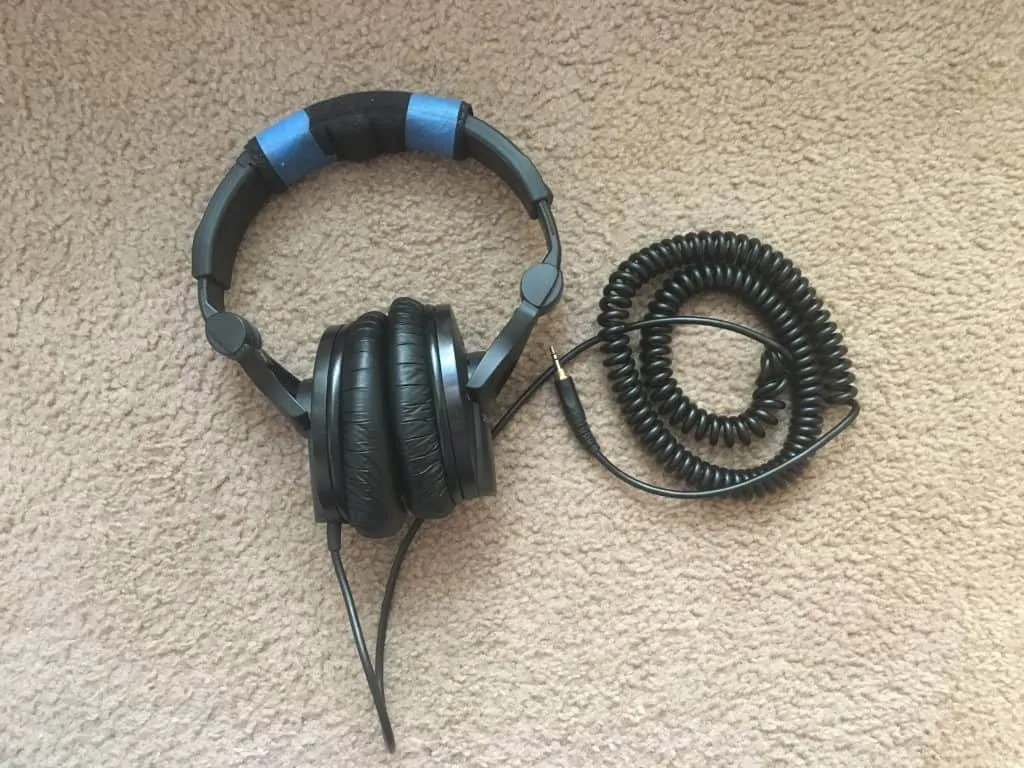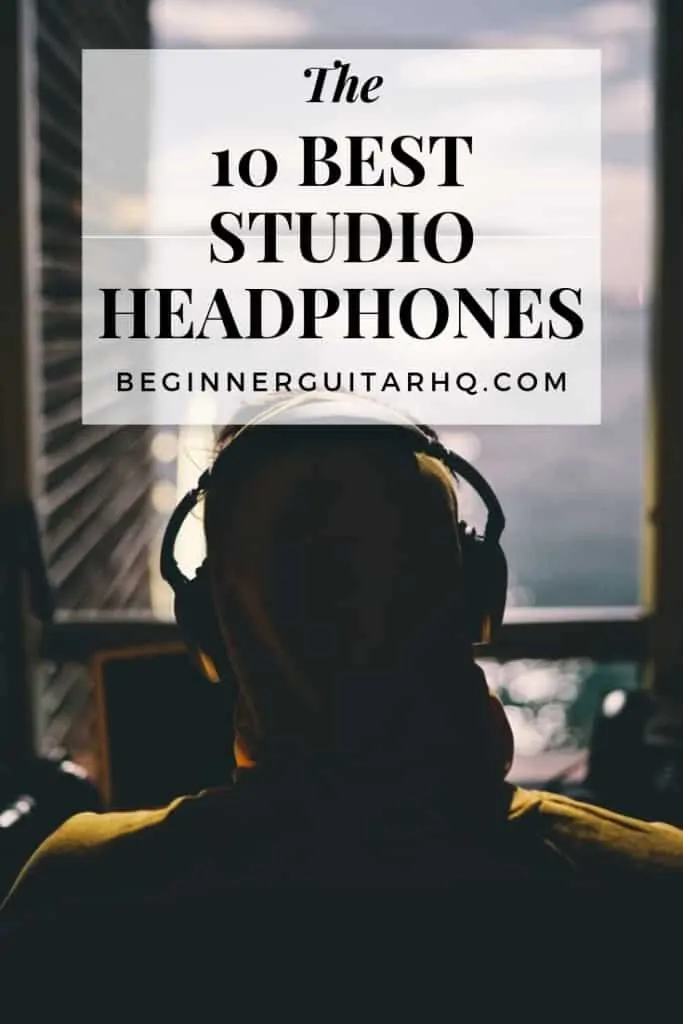Headphones can make or break your studio experience. The wrong headphones can give you a completely different sound than you expected. The best pair depends on your situation.
Will you be mixing? Or will you just be recording acoustic guitar? Do you plan to spend a lot of time wearing headphones?
All factors you need to consider.
In this post, we’ll talk about the right kind of headphones for your needs and then we’ll lay out the 10 best studio headphones.
The Two Types Of Studio Headphones
Headphones are a crucial part of making professional-sounding music
Before we dive into the best studio headphones on the market, we first have to talk about the two types of studio headphones. They do different things. And that means you should use them in different contexts.
The two types of studio headphones are closed-back headphones and open-back headphones.
Closed-back headphones fully cover your ears, isolating the sound from outside noise. Different models of headphones offer different levels of isolation, but they all offer some escape from external noise.
They also cut down on the audio leaking out of the headphones. This means they’re best for recording — you don’t want your playback audio to leak into whatever instrument you’re recording.
Open-back headphones, on the other hand, do not isolate outside noise or insulate audio playback. They’re not meant to. These are actually designed to allow noise leakage. This is because they’re meant for mixing music.
The more isolation a pair of headphones has, the more the sound quality and accuracy decreases. And you’ll need higher sound quality when you’re mixing. In an ideal world, you’d primarily mix from your studio monitors. However, a lot of beginner producers have mobile studios and headphones are just more convenient and their best option.
So to recap: if you’re recording live instruments, go with a pair of closed-back headphones. If you’ll be mixing, a pair of open-back headphones or studio monitors are best.
The 10 Best Studio Headphones
Our list of the 10 best studio headphones includes both open-back and closed-back headphones. So this should cover all your bases!
We’ll mark the price with $ (affordable), $$ (semi-affordable), and $$$ (expensive).
AKG K701 Open-Back Headphones – $$
The AKG K701s are known for delivering accurate sound while also being comfortable.
In addition to being open-back headphones, they’re also “reference-level” headphones. This means the manufacturer focused on creating the clearest, most accurate sound possible. The frequency response is as flat as possible so there’s not an emphasis on any certain frequency range.
The construction of these is super durable (plus, the design is pretty cool looking). And, as with any pair of headphones or monitors, you’ll need to work these in. It can take hundreds of hours before the sound shifts to its highest potential.
Sennheiser HD650 Open-Back Headphones – $$$
Sennheiser is one of the best sources for headphones (you’ll notice a few of their headphones on this list). The HD650 open-back headphones give you super clear and neutral audio, making them great cans to use while mixing.
These are a very comfortable pair of headphones, thanks to the velour ear cups. They don’t get sweaty like most headphones, which are made of pleather or leather. Plus, they’re lightweight. That sounds like an arbitrary point, but when you’re spending a long time in the studio, having light headphones can be important. Anything to make your studio experience comfier.
Despite the HD650s delivering a very flat frequency flat response, there is a slight emphasis on the upper bass, but it’s not too prominent. The sub-bass is a bit underwhelming, but you can use EQ to boost that.
Fostex T50RP Closed-Back Headphones – $
The Fostex T50RP headphones are definitely meant for the studio. They isolate. They give you good quality audio. And they can even work for mixing if needed (but not preferred).
Although they’re a bit quieter and muffled than other headphones, they still provide a warm tone and solid bass delivery. Plus, they won’t cause as much ear fatigue as most of the other studio headphones out there.
One common complaint is that the ear cups and overhead strap are uncomfortable. There’s not a ton of padding and they may not feel that secure on the head.
Sennheiser HD280 PRO Closed-Back Headphones – $
I’ve really worn in my pair of HD280 PROs – note the tape and fraying earcups
Here’s Sennheiser again. The HD280 PROs are probably the most commonly used pair of headphones — and they’re super affordable!
Because these fit so securely to your head and ears, the isolation is very high. When you’re wearing them, it really feels like your ears are sealed in. Because the audio leakage is so low, that means they’re one of the best choices for recording live instruments. Although because the seal is so tight, it would be a good idea to remove them every once in a while to let your ears breathe.
When you first get these headphones, the sound may be somewhat harsh. But once they’re worked in a bit (a few dozen hours), the sound mellows out and becomes smoother. Because these will color the audio, you won’t want to use these to mix.
I’ve had these for close to 10 years and only recently did the earcups start to fray and the headband cushion started coming off. But they still sound great.
Audio-Technica ATH-M50 Closed-Back Headphones – $
Audio-Technica is another name in the sound world that does not disappoint.
Their ATH-M50 model, despite being closed-back headphones, are actually design for mixing. It is a general rule that closed-back headphones are not best for mixing, but the ATH-M50s are an exception. In fact, these leak a little more than other closed-back headphones, so that’s another reason to use them for mixing instead of tracking.
Engineers describe these as well-rounded and balanced, which is what you want in a pair of mixing headphones. They’re sensitive and clear. The bass is present but not overpowering. And the top end is airy and dynamic.
On top of this, the ear cup padding and headband make them pretty comfortable for longer mixing sessions.
Beyerdynamic DT250 Closed-Back Headphones – $$
Beyerdynamic’s DT250s are moderately good at insulating your ears from outside noise while giving you decent and secure comfort. They’re not as sensitive as some other headphones in this price range, but they deliver a nice balance of tones.
They’re also a bit colored, which is not good for mixing. Because of that and because they’re closed-back, they’re best for tracking and not mixing.
According to professional audio engineers, these are a solid choice for overdubbing and tracking.
AKG K240 MKII Open-Back Headphones – $
The AKG K240s are super lightweight and comfortable, even though they may not look like they would be. These are very open open-back headphones. They’re not good for tracking but great for mixing.
The audio you’ll hear is detailed and clear. The big thing these lack is some umph — there’s not much bass presence. They have a bass roll-off, so these aren’t for EDM or hip-hop producers.
However, if you’re producing in any other genre, these will probably be a great fit. They’re crisper than other headphones in this class, so it may take a little getting used to.
So it seems like these headphones are for a niche of people — those who are producing music that’s not bass-heavy and that focuses on brightness.
Audio-Technica ATH-M35 Closed-Back Headphones – $$
The ATH-M35s are super light and somewhat comfortable. They’re secure, but the ear cups are a little too small for the average ears.
When it comes to the sound, it’s a bit thin and not too dynamic. Although that allows them to be smoother somehow. So, because of their inaccurate sound quality, these are not good for mixing. But if you need an affordable pair of headphones for tracking, these are a decent option.
Sony MDR-7509 HD Closed-Back Headphones – $$$
The MDR-7509s have super comfortable and give you very good isolation. This allows you to spend a lot of time with the dynamic range and quality stereo imaging it offers. Because of this, these work best for mixing even though they’re closed-back headphones.
The low end is not amazing and the midrange is a little overemphasized. This can lead to imbalances, but the more you use them the more your ears will compensate for it.
If you’re going to get these, you may need another pair of headphones or monitors to reference your track against. However, because they’re on the more expensive end, they may be difficult for some beginner producers.
Sennheiser HD25-1 II Closed-Back Headphones – $$$
Despite the strength of the clamping of these headphones and how the headband padding gets flattened, these are still a solid option. The sound quality makes up for wearability.
The audio is well balanced from low to high. They’re clear and accurate with a small midrange de-emphasis. Plus, they isolate the sound really well, allowing you to focus on what’s most important.
Wrapping Up
Now you should have a much better idea of what pair of headphones are best for you. And once you find them, you’ll be on your way to making professionally recorded, well-mixed music.

Caleb J. Murphy is a songwriter, composer, and multi-instrumentalist based in Austin, Tx. He’s been playing guitar since 2002, writing songs since 2005, and producing music shortly after that. After getting a few (unofficial) basic guitar lessons from his brother, he taught himself guitar the rest of the way. Since then, he tries out any instrument he can get his hands on, like piano, banjo, ukulele, and cheap keyboards from the 90s.


